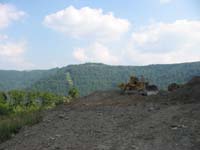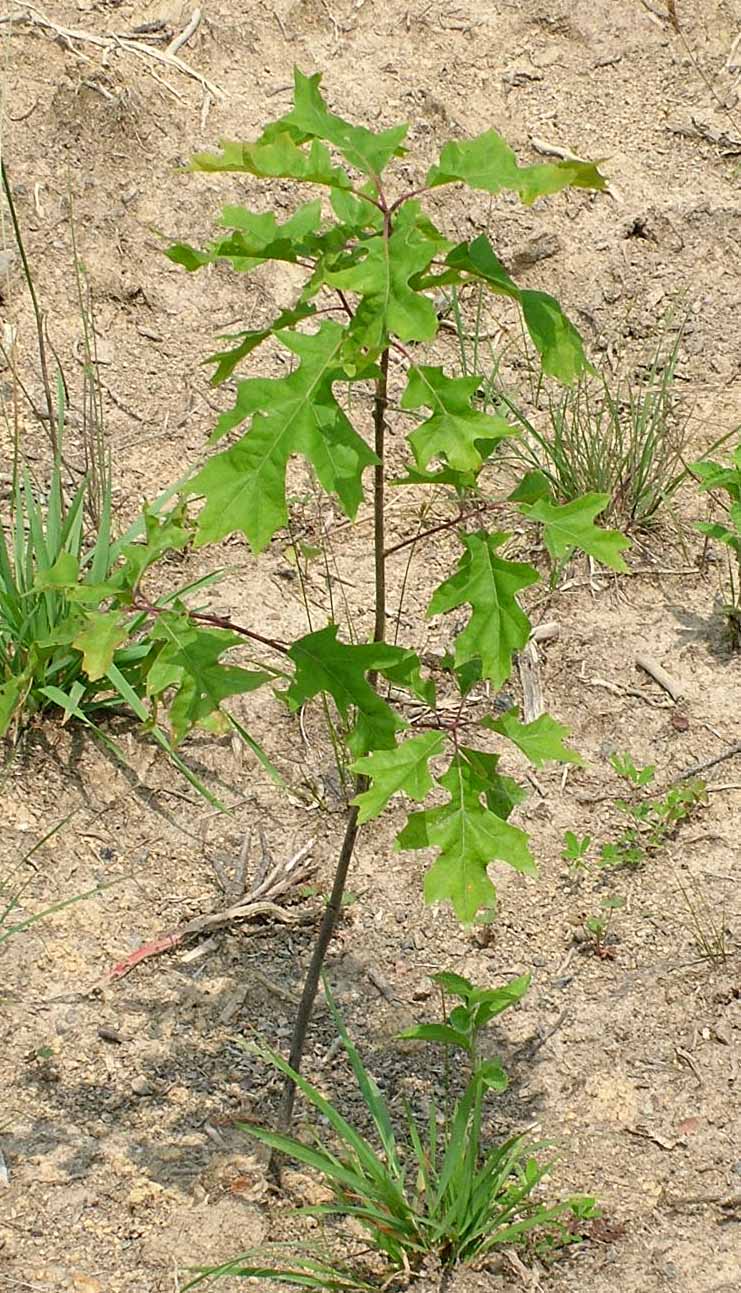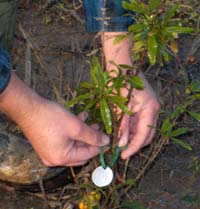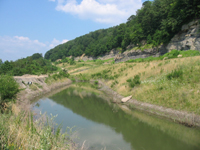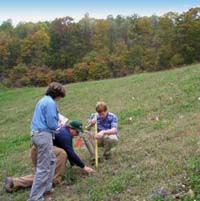

Numerous changes are occurring in our forested ecosystems in Tennessee, and the effects of these changes on our forests are poorly understood. Harvesting, mining, and recreational use of forests alters the soil properties, and thus affects tree growth. Of course, any given forest stand is not impacted by a single factor, but by many including climate change, the deposition of sulfur, nitrogen, and acids, ozone, altered hydrology, insects and disease, and invasive plant competitors. One of the great challenges is to determine the relative importance of a given factor in influencing growth and health. Our goal is to go beyond simple correlations between growth and environmental factors, and understand the physiological mechanisms by which the environment affects tree growth.
Soil Properties Manipulations
In the silviculture of southeastern hardwoods, an attempt is made to favor the regeneration of more economically important species such as oak, over that of less valuable species. The goal of our current research is to apply soil amendments, and identify soil properties which the inhibit the growth woody competitors but allow the establishment and growth of planted oak seedlings.
Root Severing
The installation of trenches is common in the urban environment, and often severs the root systems of mature trees. Standard guidelines call for avoiding trench installation within the tree dripline, but there is a lack of published data concerning degrees of tree injury in relation to trenching. We have installed a series of trenches at varying distances from mature trees of three species common in the urban landscape, then replaced the soil in the trenches. Crown dieback and foliar nutrients will be monitored over several years.
Conducted at the Forest Resources Research and Education Cener
Restoration of Bottomlan Oak Forests
Many of the lower Mississippi Alluvial valley hardwood forests were converted to agriculture during the past century. With a new recognition of the value of these forests comes a new interest in restoring bottomland ecosystems. In order to maintain existing bottomland forests and reforest abandoned agricultural fields we need a better understanding of how native species is able to establish and survive with periodic flooding. We are currently investigating the growth and physiology of several oak species planted on former agricultural land, experimentally subjected to three durations of flooding.
In conjunction with Dr. Matt Gray of UT Forestry, Wildlife & Fisheries Wetland Lab
Mine Reforestation
In the Cumberland plateau region of Tennessee lies an estimated 78 million
tons of coal that is removed by surface mining. Under SMCRA regulations,
adopted by Tennessee in 1984, tailings were graded to minimize the “benches”
and “high-walls” left after coal removal, then heavily compacted
to prevent the movement of sediment. While grasses thrived on the compacted
material, trees have not been able to establish. As a member of the academic
team of the Appalachian Regional Reforestation
Initiative (ARRI), our goal is to develop new recommendations for
mine reclamation that will promote the re-growth of our native forests.
We are currently investigating the effects of various groundcovers on
the establishment and growth of native tree species. The development of
root systems and degree of competition for water and nutrients between
tree seedlings and herbaceous species is being investigated. Working on
our 2005 planting sites is a graduate student, John
Rizza.
